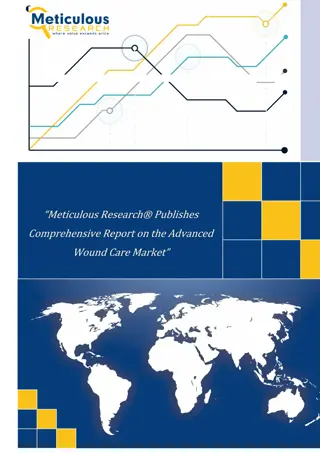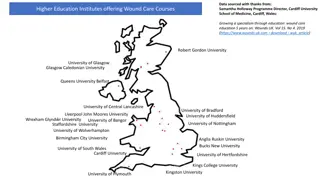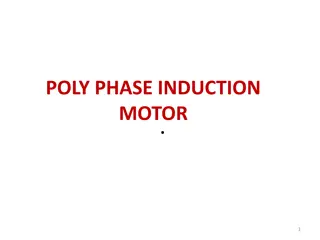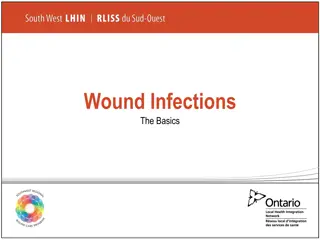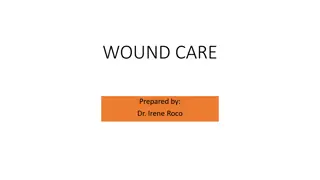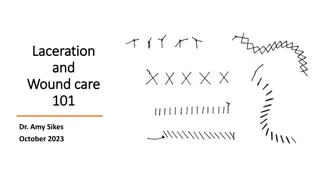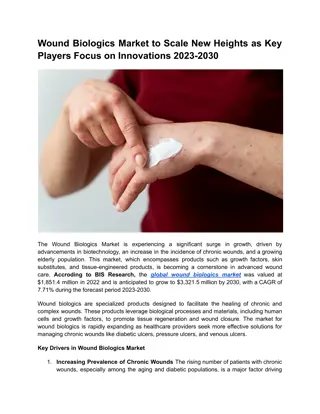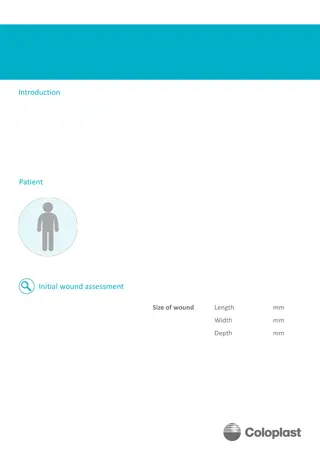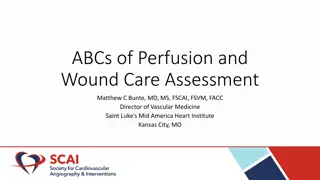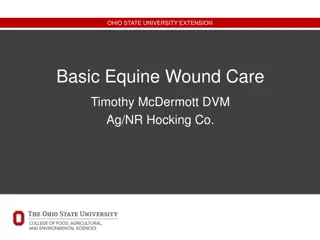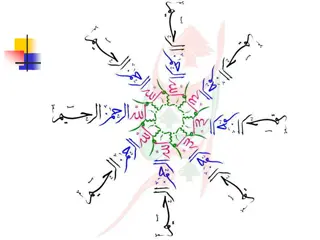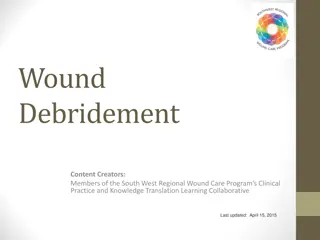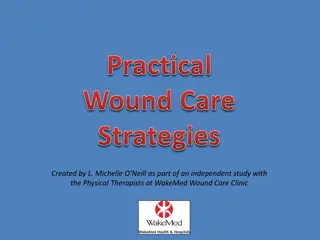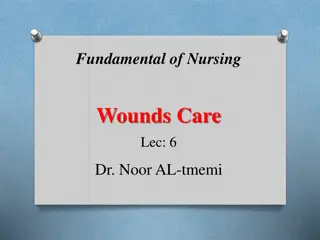Comprehensive Wound Assessment and Treatment Report
This detailed report provides a comprehensive assessment of a patient's wound, including measurements, tissue type, exudate, infection, wound bed assessment, wound edge assessment, periwound skin evaluation, and management goals. The report also includes treatment results and the reassessment of the wound at the end of the case period. The conclusion involves consenting to the use of information and photos by St. Luke's Hospital and Coloplast. The report emphasizes the importance of proper wound management and monitoring for optimal healing outcomes.
Download Presentation

Please find below an Image/Link to download the presentation.
The content on the website is provided AS IS for your information and personal use only. It may not be sold, licensed, or shared on other websites without obtaining consent from the author.If you encounter any issues during the download, it is possible that the publisher has removed the file from their server.
You are allowed to download the files provided on this website for personal or commercial use, subject to the condition that they are used lawfully. All files are the property of their respective owners.
The content on the website is provided AS IS for your information and personal use only. It may not be sold, licensed, or shared on other websites without obtaining consent from the author.
E N D
Presentation Transcript
Introduction Patient Initial wound assessment Size of wound Length cm Width cm Depth cm
Initial wound assessment continued For tissue type and exudate, write findings For other, mark x for findings from assessment Wound bed assessment Tissue type Exudate Infection Wound bed WOUND Wound edge assessment Maceration Dehydration Undermining Thickened/rolled edges Periwound skin assessment Maceration Excoriation Dry skin Hyperkeratosis Callus Eczema Wound edge Periwound skin Management goals Mark x for all appropriate management goals Wound bed assessment Management goals Remove non-viable tissue Manage exudate Manage bacterial burden Rehydrate wound bed Protect granulation/ epithelial tissue Wound bed WOUND Wound edge Periwound skin Wound edge assessment Periwound skin assessment Management goals Manage exudate Protect skin Rehydrate skin Remove non-viable tissue Management goals Manage exudate Rehydrate wound edge Remove non-viable tissue Protect granulation/ epithelial tissue
Treatment Results
Reassessment of the wound at the end of case period For tissue type and exudate, write findings For other, mark x for findings from assessment Wound bed assessment Tissue type Exudate Infection Wound bed WOUND Wound edge assessment Maceration Dehydration Undermining Thickened/rolled edges Periwound skin assessment Maceration Excoriation Dry skin Hyperkeratosis Callus Eczema Wound edge Periwound skin Conclusion I hereby consent that St Luke s Hospital and Coloplast may freely use the information and photos in the case report. Please double click on PDF icon to learn more














